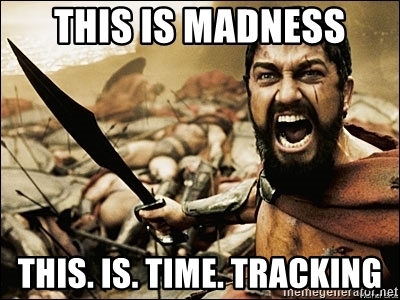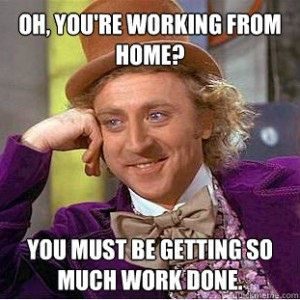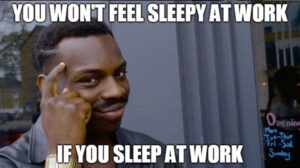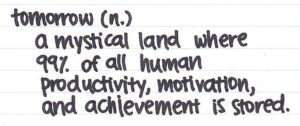A few months ago I started seeing a product called Timeular all the time thanks to some annoying instagram ad targeting! It’s a device that sits on your desk and is used to track the activities you’re working on. I had 2 initial thoughts, first that it looked really cool, but second that I doubted the actual value it would bring beyond just telling me something I already knew.
So… rather than spending money on something without knowing if I could make it a habit or if it would actually change anything in the way I go about my day-to-day, I downloaded an awesome app called Boosted and took it for a test drive for 16 days. It’s a completely free app and has great reviews:

It’s pretty simple – you setup Projects (activities) then can add tasks embedded within that (e.g. a Project of Coding could have a task of HTML). I didn’t bother with the task functionality as I was looking for a high level view on where I spent my time.
Lesson 1: You learn a tonne just by making the activities list
Have you ever sat down and listed all the things you do whilst at work? I certainly had not. My list ended up looking like this:
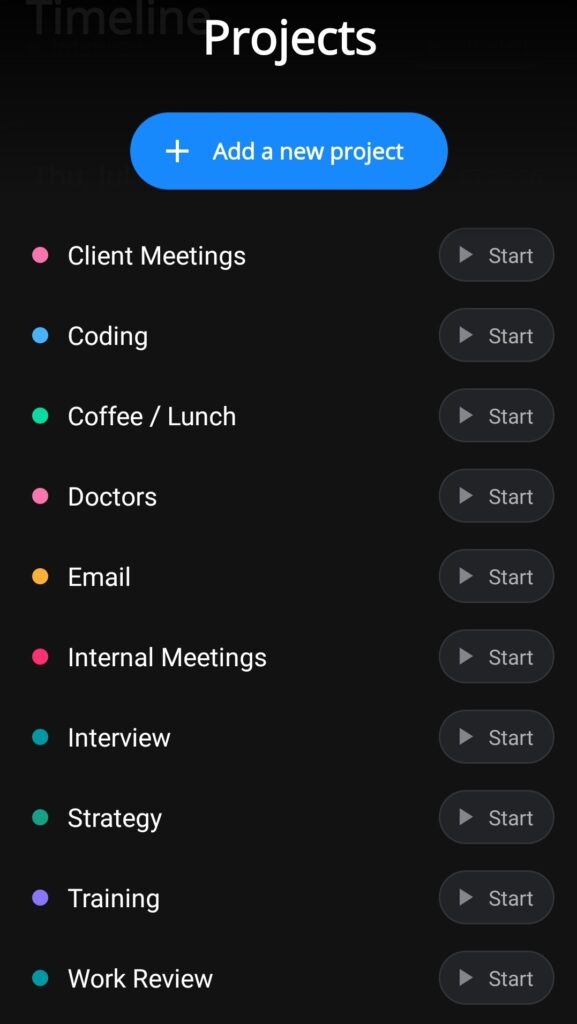
The broadest bucket here is probably Strategy, which relates to anything I’m doing that’s beyond single-client-work and not wrapped in an internal meeting (quick plug, read how to make internal meetings good here). Also if you’re wondering why Doctors is listed, I have a disability and didn’t want to leave blank spaces in the tracker if I had to go to an appointment.
Anyway… Training and Work Review really stood out to me. It’s obviously important that I am continuously training and enabling my team to be the best in the world at what they do and that I should follow up that training with frequent feedback and work reviews… but I’d never really thought about it. This instantly changed my behaviour, I did a company wide call audit for one of the roles and it highlighted a number of changes we can make that will (hopefully) have a big impact on performance. Simply writing the list, changed my behaviour, so try it!
Lesson 2: Check you do what you claim you do
You should absolutely go into this with a preconceived idea of what you expect the results to say. I have written in the past about how to efficiently manage your inbox so it doesn’t sap all your time but still gets cleared… but was surprised to see this in the first week:
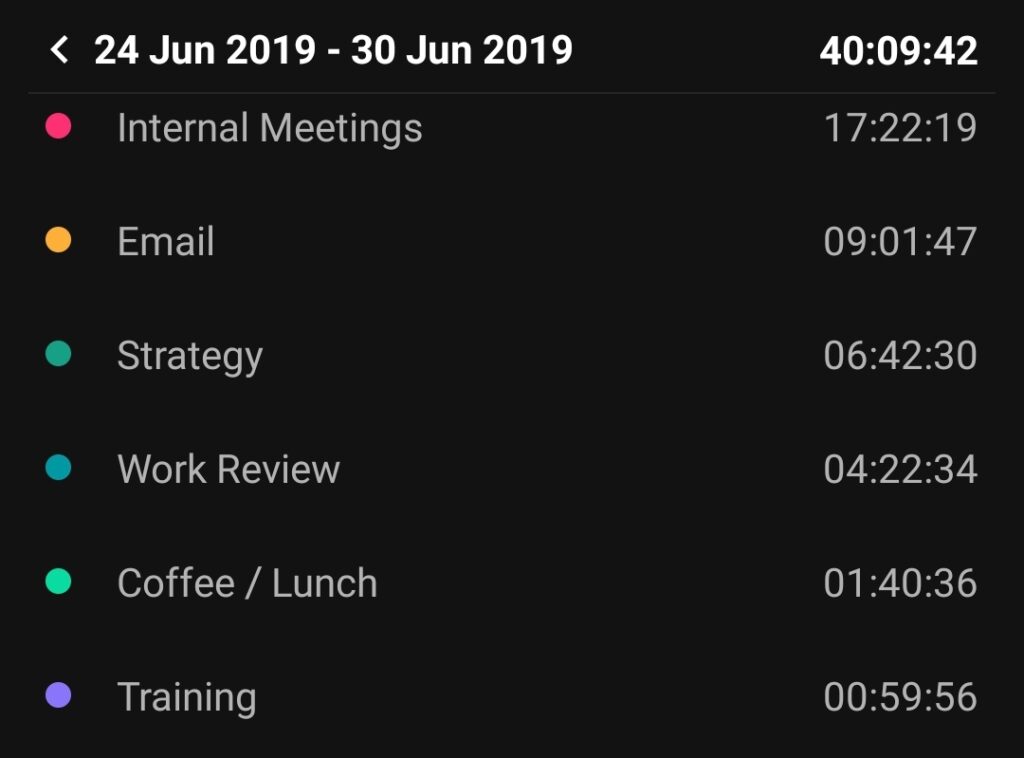
I spent 9 hours on email in a single week, that’s almost a quarter of my time wasted working on something I claimed to be efficient at. I realised that whilst I was using my email system, I was setting time aside to work on email, which effectively meant I triaged then immediately went in and started clearing it, defeating the purpose of the triage. I switched to triaging emails when I was in internal meetings (the #1 activity) then clearing the important emails for that day and not getting stuck in the mud with irrelevant items. The results…

I go from 9 hours of dedicated email time in week 1, to 3 hours in week 2 and just 47 minutes in week 3, all whilst keeping my inbox cleared and all action items completed.
Lesson 3: Reinvest your time and keep adjusting but stay healthy
The time saved from email was mainly reinvested into Strategy, moving from 6 hours to over 12 hours in the 2nd and 3rd weeks. In the time series graph above, Strategy is the 2nd biggest block and is green, stacked on red which is the infamous internal meetings.
Another really important thing I noticed was I barely spent any time outside the office in the first 10 days or so. Other than dashing out to grab a coffee or buy lunch to have at my desk, I was pretty much always working. That’s not healthy, will lead to burnout and a complete destruction of any productivity gains you’ve made. I made a conscious effort to get out more, even if that was as simple as walking further to get lunch and spending time outside.
Have an idea in your mind of what you want your typical day to look like – measure what you do, use the data to make changes and work towards maximum efficiency. Here’s what mine looks like now:
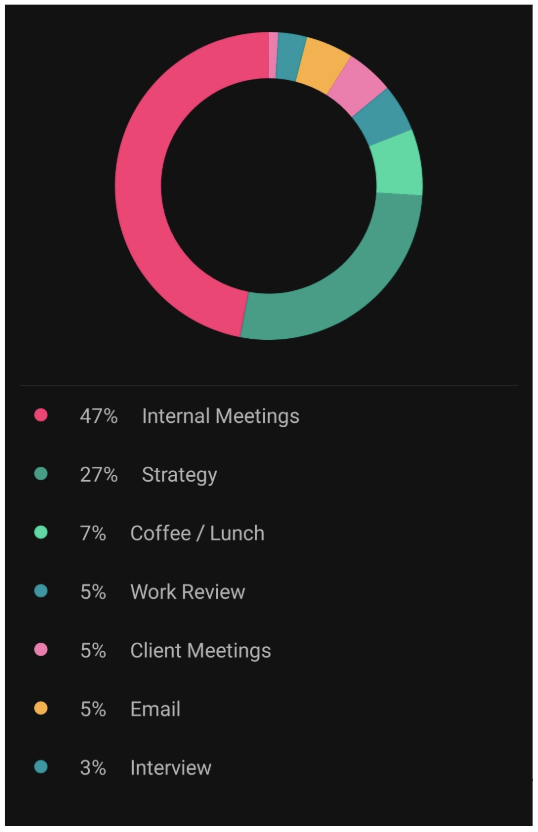
As a VP, Internal Meetings cannot be avoided and are a very important part of my role (if done right), but it’s not the 70%+ I would have initially guessed. There’s still areas to improve, I need to get training on that board and I need to join more client meetings, but that’s a problem for tomorrow!
I score this productivity hack as:
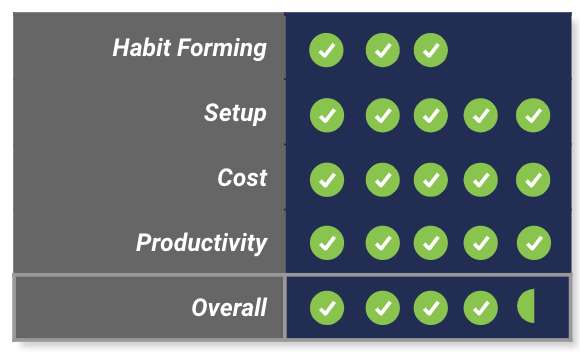
It’s hard to remember to keep tapping a button every time you change activity – it takes time to stick. Setup and Cost are easy 5 stars as its free (although buying the Timeular device may solve for habit forming). It has to be a 5 for productivity… the lessons are incredibly valuable and make a difference. So overall… 4.5!
